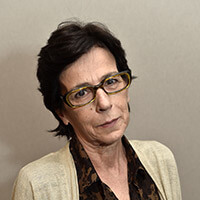Bovet by Pininfarina is primarily a collection of Ottanta tourbillon watches with Bovet in-house movements. The first in the series coincided with the 80th anniversary (Ottanta is “80” in Italian) of the design studio that was set up in 1930 by Gian-Battista Farina, known to all as “Pinin”, hence “Pininfarina” which became the studio’s official name in 1961. Since then, each new Ottanta has borne the number of the year of its launch: Due for 2012, Tre for 2013, and Sei for 2016. The collection also extends to a line of chronographs – Cambiano (2011) and Sergio (2014) to date – in reference to the eponymous concept cars.
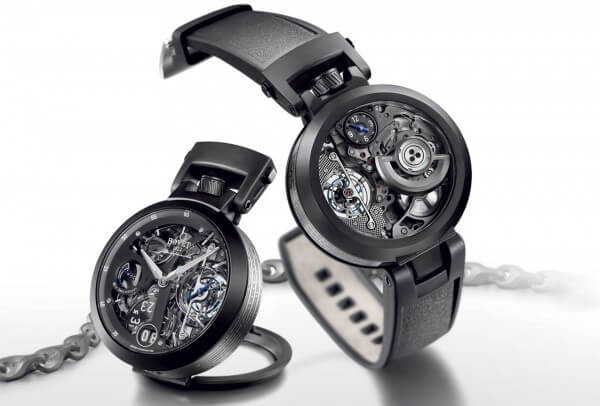
Destiny strikes again
Pascal Raffy, the owner of Bovet and a Ferrari collector, met Paolo Pininfarina when the two were seated side by side at the 2007 Barnyard Ferrari Event dinner in Carmel, California. It was, says Raffy, “destiny, as often happens at Bovet.” Let’s not forget that in 2006 Raffy was able to buy the Manufacture in Tramelan and Château de Môtiers at just a few months’ interval, making “his” an authentic Haute Horlogerie brand much faster than he would ever have imagined.
Back to the Ferrari dinner, where the two men found they had plenty to talk about; within an hour of sitting down, Paolo Pininfarina was already intent on expressing his idea of time through a Bovet watch. Pascal Raffy recalls a man who shared the same values in terms of “family, tradition, culture, true luxury and what it means to be a collector”; a man with the same attachment to craftsmanship and the preservation of heritage. This meeting of minds manifests itself in their respective companies, both of which are rooted in “solid foundations that merge modernity with continuity”, and in products that epitomise “pure lines and extreme excellence”; products “with substance that are far removed from the ephemeral”.
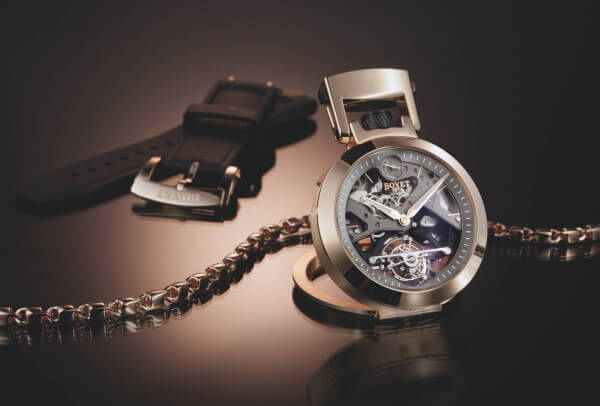
At the end of the dinner, one question remained: would their teams be able to work together? “It wasn’t a foregone conclusion, especially when distance is part of the equation,” says Pascal Raffy. “Bovet already has three sites. What would it be like to add a fourth, in Italy, and in a different sector of activity as well!” Apparently, though, the two companies were made to get along. “We’ve built up a great relationship. First of all, nine of us went to Turin where we met the people from Pininfarina. They came in and out of the meeting depending on the points under discussion. The atmosphere was laidback but there was no doubting the very real interest everyone had in the project. Since then, six Bovet by Pininfarina watches have seen daylight, and the partnership is in great shape. Not once have I had to refer back to our contract to settle any kind of difference.”
OttantaSei, a model of transparency
The project manager and technical director from the movement manufacturing site make at least ten trips to Italy a year. Pascal Raffy and Paolo Pininfarina get together three or four times a year, depending where in the world their schedule takes them. The watches are a combination of Bovet’s technical expertise and Pininfarina’s aesthetic vision. Bringing each project to fruition tests both partners’ limits. “It’s a mutual challenge,” says the team at Bovet. “Pininfarina’s designers have had to take onboard a completely different working method to the one they’re used to. Drawings are larger than the product, not smaller as they would be for a car, for example, hence they need to constantly bear in mind that their designs won’t have the same visibility. It’s harder than it may seem, particularly when creating something visually striking. On our side, we’ve learned to work more intensely with volume. Bringing out contrasting depths, for example, involves a gradual shift from dark to light on the surface, a technique which as far as we know has never previously been applied to a watch.”
The movement of the OttantaSei is an eloquent example of the horological culture that Pininfarina's designers have acquired.
Bringing Pininfarina’s designs to life has set Bovet a number of technical challenges over the years, and the OttantaSei is a case in point. In Pascal Raffy’s eyes, it represents the collection at its most mature. The first step was, of course, to imagine the case. The Italian studio redesigned the Fleurier case in an elegantly sporting vein, introducing straight lines for the bow, a flat surface for the front and back bezels, a contemporary Javeline style for the hands, and a rubber strap with an Alcantara calfskin lining. Whereas earlier models in the collection retain the patented Amadeo convertible case, OttantaSei opts for transparency instead, thanks to hard-to-machine sapphire crystals for the case front, back, and the remarkable curved sections along the sides.
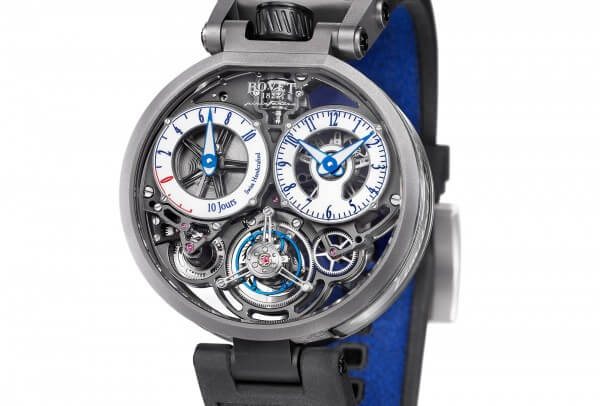
The movement architecture
The movement of the OttantaSei is an eloquent example of the horological culture that Pininfarina’s designers have acquired, and which they have applied with far greater autonomy than before. The architecture they imagined for the movement is a model of balance and transparency. which Bovet’s technicians have transposed in a custom-made plate that makes extensive use of openworking without sacrificing any of its structural rigidity. It takes half a day to machine a single plate, including electrical discharge machining (EDM), and another full day for the magnificent hand-finishing: the unobstructed view afforded by the transparent case means no surface is left unadorned.
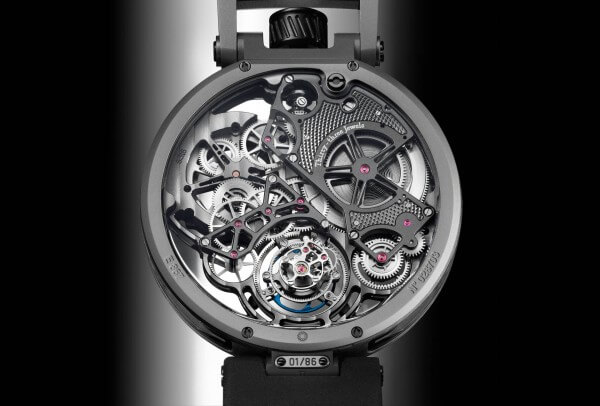
A highlight of these refined decorations is the shading method, contributed by Pininfarina, which uses an impressive 34 nuances from black to white to accentuate depth. The circular bipolar Clous de Paris that are a feature of every Ottanta tourbillon are reprised on the two plates which are screwed to the barrel bridge. At the start of the design process, Bovet submitted a range of decorations produced by its craftsmen for the Italian design studio to assess. The decision was taken to create an exclusive Clous de Paris pattern by tracing curved rather than straight lines between the pyramid shapes. This implies a slight skewing of the pyramids which Bovet’s technicians rendered invisible; another major challenge, brilliantly met!







